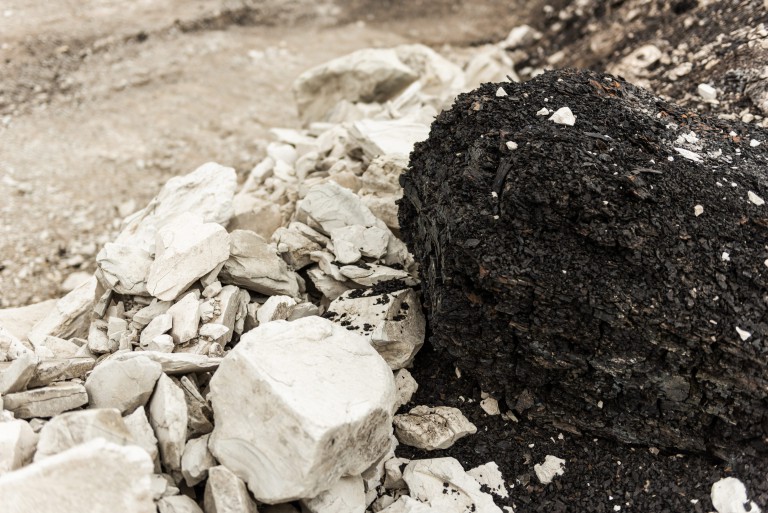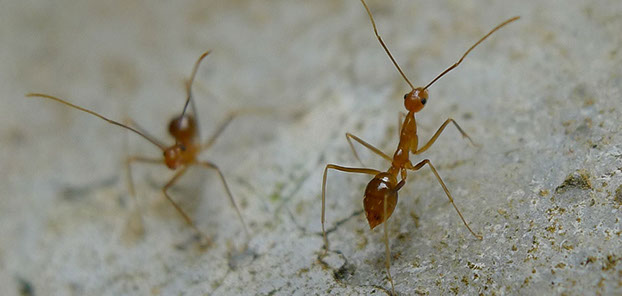Raspberry crazy ants are named after Tom Raspberry, an exterminator who first discovered them in Texas in 2002. Originating in South America, Raspberry crazy ants are also known as tawny ants or Nylanderia fulva. The species is referred to as “crazy ant” due to their quick, erratic and somewhat psychotic behavior. Raspberry crazy ants are reddish-brown in color. Colonies do not have centralized nests or mounds but, rather, live under stones or piles. Large colonies can have numbers in the billions and, in some cases, they may be so tightly packed together that they are mistaken for dirt. Crazy ants do not fly and therefore only move, on average, 200 meters per year. However, they are spread via humans in abandoned boxes, potted plants, vehicles, etc. Crazy ant colonies have established themselves throughout the states along the Gulf Coast of the United States as well as in at least 27 counties in Texas. They have also been seen in Louisiana, Mississippi, Florida and Georgia.
Crazy ants have the ability to harm the environment, effecting ecosystems by reducing the number of other invertebrates, including spiders and centipedes, which are staples for species like birds. As well, crazy ants may cause property damage and are commonly known for destroying electrical equipment including car stereos, circuit boxes, laptops, water pumps, gas meters, machinery and apparently have even temporarily shut down chemical plants. So many ants will gather inside of a device that they form a single mass that shorts the circuit. While crazy ants do not sting, they are capable of killing animals through asphyxiation. They may smother chicks as they are hatching, obstruct the nasal cavities of chickens, causing asphyxiation, and even swarm into cows’ eyes.
Crazy ants are the first known insect species with the ability to protect themselves from another insect’s poison. The ants cover themselves with formic acid which protects them from being affected by the venom of their close relative the fire ant. This acid is exuded from where a stinger would normally be located on other ant species. This area also allows crazy ants to spray their enemies, contributing to their survival by allowing them to eliminate competing species that would usually keep them at bay. In fact, crazy ant colonies have the ability to take over active nests from other ant species as well as overtake beehives. They will infiltrate any cavity available, including pipes, fuse boxes and even the inner-workings of a car.
Crazy ants are very difficult to exterminate. With one colony having multiple queens, they reproduce quickly and can easily rebound even after an extermination. In the fall, a colony may experience a large loss of worker ants due to a drop in temperature however, the queens survive and come spring an even larger population may emerge.
It is suggested, by Paul Nester, a program specialist with Texas A&M’s Agrilife Extension Services, that individuals modify their homes and gardens to help protect their property from crazy ants. It is suggested that homeowners remove mulch, potted plants and wood piles, fallen tree limbs, rocks, and other objects sitting directly on the ground to eliminate areas where crazy ants may thrive. Crazy ants prefer humid, wet conditions therefore it is advised that individuals reduce the amount of irrigation, repair leaks and improve drainage to help prevent infestations. It is also important to inspect anything being moved from an infested area in order to avoid the transfer of crazy ants to a new location.
Please note: If you suspect that your house or property is infested with crazy ants it is important to call a pest control professional.
Image by John Tann


